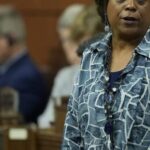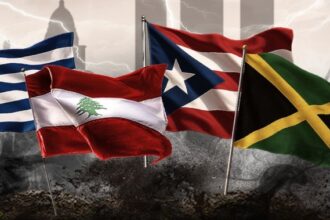As Ontario’s controversial Bill 5 approaches its final legislative hurdles, Premier Doug Ford has issued stern warnings to potential protesters, setting the stage for what could become a significant showdown between government authority and civil resistance. The bill, which has sparked heated debate across Ontario’s political landscape, is expected to receive final approval within days despite mounting opposition.
“Let me be crystal clear – we will not tolerate any blockades or illegal activity,” Ford declared during yesterday’s press conference at Queen’s Park. “People have the right to protest peacefully, but the moment anyone crosses the line into unlawful behavior, there will be consequences.”
The Premier’s unusually direct language comes after intelligence reports suggested organized demonstrations could potentially disrupt critical infrastructure. Security measures around the provincial legislature have been visibly enhanced, with increased police presence and additional barriers installed along entry points.
Bill 5, officially titled the “Provincial Infrastructure and Housing Acceleration Act,” has been criticized by environmental groups, Indigenous communities, and municipal leaders for its sweeping changes to development regulations. Critics argue the legislation undermines local planning authority and environmental protections in favor of accelerated development.
“This bill effectively silences community voices in the development process,” said environmental lawyer Teresa Sanderson. “By removing key oversight mechanisms, we’re looking at potentially irreversible damage to protected wetlands and conservation areas.”
The Ford government maintains the legislation is essential for addressing Ontario’s housing crisis. Housing Minister Paul Calandra emphasized the urgency yesterday: “We’re facing unprecedented housing shortages. This bill will cut through red tape that has been blocking critical development for years.”
Economic analysis from the C.D. Howe Institute indicates the legislation could potentially accelerate housing starts by 12-15% annually, though questions remain about environmental sustainability and long-term community impacts.
Indigenous leaders have been particularly vocal in their opposition. Grand Chief Ronald Harding of the Union of Ontario Indians stated: “This bill fundamentally violates consultation processes guaranteed in our treaties. We cannot and will not stand by while decisions affecting our ancestral lands are made without proper dialogue.”
Provincial police have reportedly been conducting scenario planning for potential demonstrations, with internal documents revealing concerns about possible blockades at key transportation corridors similar to those seen during previous protest movements in Canada’s recent history.
The Ontario Federation of Labour has also expressed solidarity with potential protesters, stopping short of endorsing disruptive tactics but affirming workers’ rights to demonstrate against legislation they view as harmful to community interests.
As tensions escalate, political analysts note the potential political cost for Ford’s government. “The Premier is taking a significant gamble,” noted Dr. Helena Wong, political science professor at York University. “Heavy-handed responses to protesters could backfire dramatically, especially if demonstrations remain largely peaceful.”
The legislation is expected to pass final reading by Friday, setting up what many anticipate will be a weekend of demonstrations across the province. As Ontario stands at this crossroads of development priorities and environmental protection, the fundamental question emerges: at what point does accelerating economic growth begin to undermine the very communities such development is meant to serve?

























